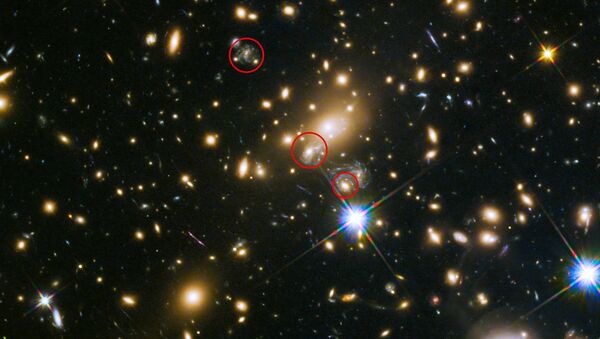Images of the first predicted supernova event were announced January 15 in an article by a group of researchers, summing up observations made of the supernova using the Hubble telescope.
The Refsdal supernova was first spotted in the galaxy cluster MACS J1149.5+2223 in November 2014. The explosion dates back some 10 billion years, the Hubble website explained. On first photographic encounter, Refsdal was captured in four separate images due to a cosmic optical illusion caused by the gravitation of galaxies, an effect known as gravitational lensing.
Ah, the awaited #Supernova #Refsdal press release is out: https://t.co/nTPzUxsEUs pic.twitter.com/MQm8a7HXT1
— Jan Hattenbach (@JanHattenbach) December 16, 2015
“While studying the supernova, we realized that the galaxy in which it exploded is already known to be a galaxy that is being lensed by the cluster,” explained Steve Rodney, co-author, from the University of South Carolina. “The supernova’s host galaxy appears to us in at least three distinct images caused by the warping mass of the galaxy cluster.”
By creating seven models of the galactic cluster using data from Hubble and other instruments, including VLT-MUSE and Keck, researchers predicted the reappearance of the Refsdal supernova late fall the next year. The calculations were correct, and the supernova pictures were captured again on December 11, 2015.
The discovery provides solid empirical proofs for current scientific approaches in astronomic observations of distant galactic objects. Prospectively, observations of this particular supernova will help measure the growth rate of the universe.


